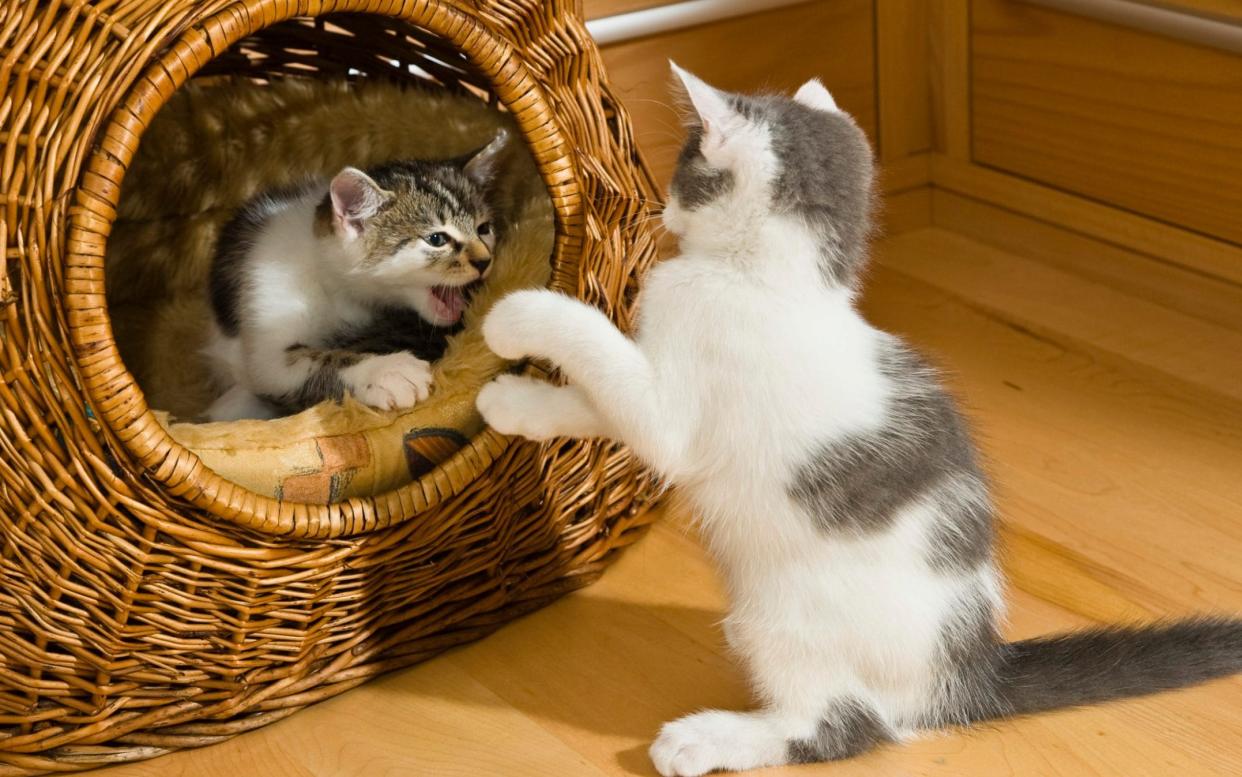How to tell if your cats are fighting or playing, according to scientists

Hissing and wrestling may not be signs that your cats have fallen out, scientists have found.
Cats, often maligned for being solitary and combative creatures, have been found to have very complex ways of interacting and communicating with each other.
Hissing, for example, is often perceived as a sign of blatant aggression, but experts say this is not necessarily the case and is used by pet cats to tell another feline it isn’t in the mood for playing.
Expert analysis of 105 YouTube videos involving 210 cats interacting reveal there to be three categories of feline behaviour: playful, intermediate and agonistic.
Animal behaviour experts from the University of Lincoln, led by Prof Daniel Mills and PhD student Noema Gajdoš Kmecová, now at the University of Veterinary Medicine and Pharmacy in Košice, Slovakia, found wrestling is a common indicator of play fighting.
“Distinguishing between real fighting and play fighting is a common problem for owners,” Prof Mills told The Telegraph.
Vocalising a key sign
Cats, he says, have a complex social arrangement and sometimes one is in a playful mood and the other is not. A hiss can be used as a non-risky way of getting the message across that the cat is not in the mood for horseplay, for example.
“The danger is that people see one of their cats hissing or something like that and they think the relationship has broken down and we don’t think that is the case at all,” Prof Mills said.
“There is this intermediate group that just means, in the short term, their behaviours aren’t compatible. You shouldn’t mistake that for a breakdown in the relationship, it is not a sign that the two cats hate each other.”
Context, he says, is absolutely key to understanding cat scraps and each interaction should not be considered in a vacuum.
Intervening in what a person thinks is a real fight when it is actually playful or an intermediate shenanigan may actually make inter-cat relations worse, he warns.
“Wrestling can be a sign of a fight but if it comes with bouts of inactivity then that often means it is playful,” Prof Mills explained.
“Playfighting is also without vocalisations. That’s the profile of the friendly cat. The agonistic cat, they might not do as much wrestling with inactivity but they do lots of vocalisation.
“You see frequent bouts of interactivity so you don’t get the long pauses in the same way as when playfighting. In the intermediate group, you get these extended periods where they are interacting, but you don’t get the wrestling.
“Owners should keep an eye out for how much they are wrestling and whether or not they’re vocalising. Vocalising can be broad and include meowing and also yowling.”
‘Important to look at what else they do’
Prof Mills says it is important to be able to understand the interactions of cats and to know whether it is a spat or an actual long-running decline in their relationship.
“A lot of cats end up at cat rescue centres because the owners think that they’ve fallen out. In the clinic, I’ve seen cats that are playing that the owner thinks is a real fight,” he said.
“If your cats sleep together in close contact with each other and you see them grooming each other, then the chances are they're a close social group.
“Even if one tends to hiss at the other one, once or twice a day. That doesn’t mean they have fallen out, it’s important to look at what else they do.”
The study is published in the journal Scientific Reports.

